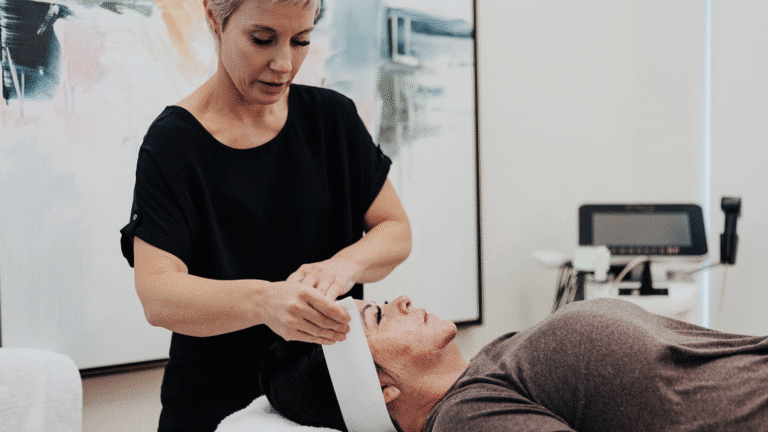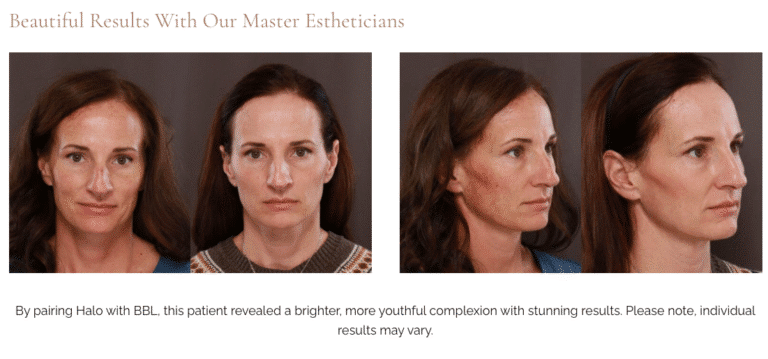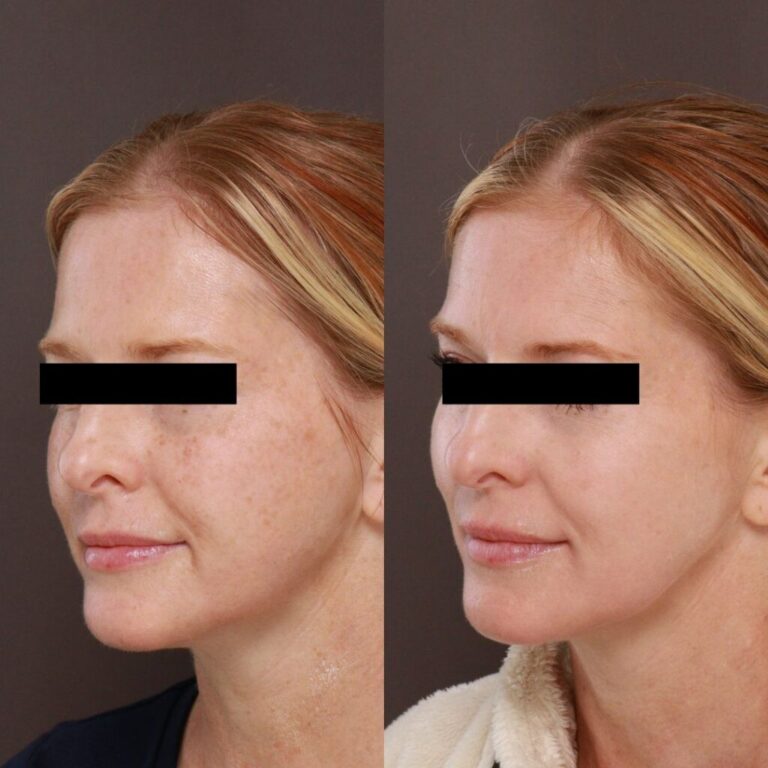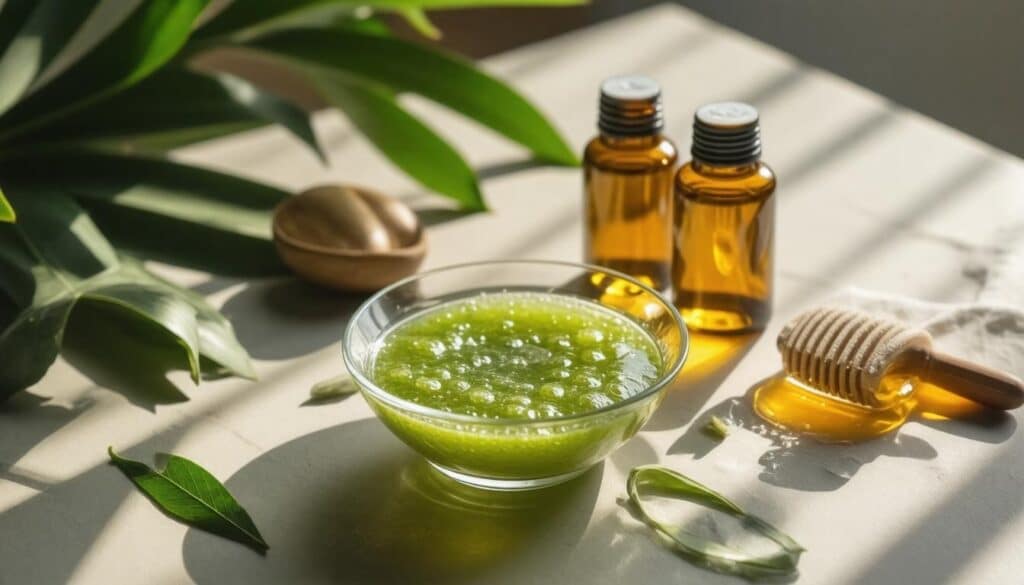Facial scars can feel like unwelcome reminders of past events, whether they’re from acne, injuries, or scar revision surgery. While some may embrace their scars as part of their story, others might wish to minimize their appearance for a smoother look. The good news is, there are plenty of ways to effectively hide these marks and even improve your skin’s overall texture with the right techniques and products. Whether you’re heading out for an important day or just want to boost your confidence, this article will guide you through innovative makeup tips and treatments that can help you feel comfortable in your own skin. So, let’s dive in and explore how you can turn those scars into a canvas that reflects your beauty!
To effectively hide facial scars, consider using high-quality makeup products specifically designed for scar coverage, such as full-coverage concealers and setting powders. Additionally, proper application techniques, like using a makeup sponge or brush for an even finish, can enhance the concealment effect, ensuring that the makeup lasts throughout the day.
At Utah Facial Plastics, our team performs hundreds of facial scar treatments annually, ranging from advanced laser resurfacing to surgical scar revision. Our double board-certified facial plastic surgeons and master estheticians tailor every plan to the individual, factoring in skin tone, scar type, and lifestyle, to ensure the most natural, confidence-boosting results. With locations in Draper, Layton, and Heber City, we’ve helped thousands of Utah patients achieve smoother, more even skin texture while protecting skin health for the long term.
Top Techniques to Conceal Facial Scars
Concealing facial scars effectively requires selecting the right techniques suited to the scar type and skin texture. Among the most popular options are silicone sheets and gels, which have earned their reputation as the gold standard for both covering and treating scars. Their effectiveness is backed by scientific studies indicating these products can flatten raised scars and reduce redness very effectively.
When you apply silicone gel sheets directly onto your scar, they create a protective barrier that not only helps in healing but also prevents further irritation from makeup application. Many who’ve used them often comment on their comfort level compared to other methods, experiencing minimal tugging or discomfort while keeping the area looking fresh and covered.
Another effective option to consider is Dermaflage concealer.
Dermaflage is an innovative solution that distinguishes itself from traditional concealers. This unique, silicone-based material fills in and conceals indented scars, leading to a naturally blended finish on the skin’s surface. It works wonders for pitted acne scars or surgical marks, transforming uneven textures into smoother appearances.
Many makeup artists advocate for Dermaflage because it stands up well against sweat and humidity—perfect for those warmer days or long events when you want your look to last the whole day ahead. It’s worth noting that proper application is key; use a small amount of product and gently press it into the scarred area before allowing it to set for the best results.
According to UFP’s Master Esthetician Team, patients with surgical scars often benefit from combining Silagen and Skin Medica Scar Gels. And those will acne scars could even benefit from dermal fillers in combination with professional laser resurfacing to smooth texture. This makes makeup application easier. In our experience, 82% of patients report longer-lasting, more natural coverage when they follow their treatment plan with our recommended scar-specific makeup routine. For Utah’s dry climate, we’ve found that layering a hydrating primer under a high-pigment concealer prevents cracking and enhances all-day wear.
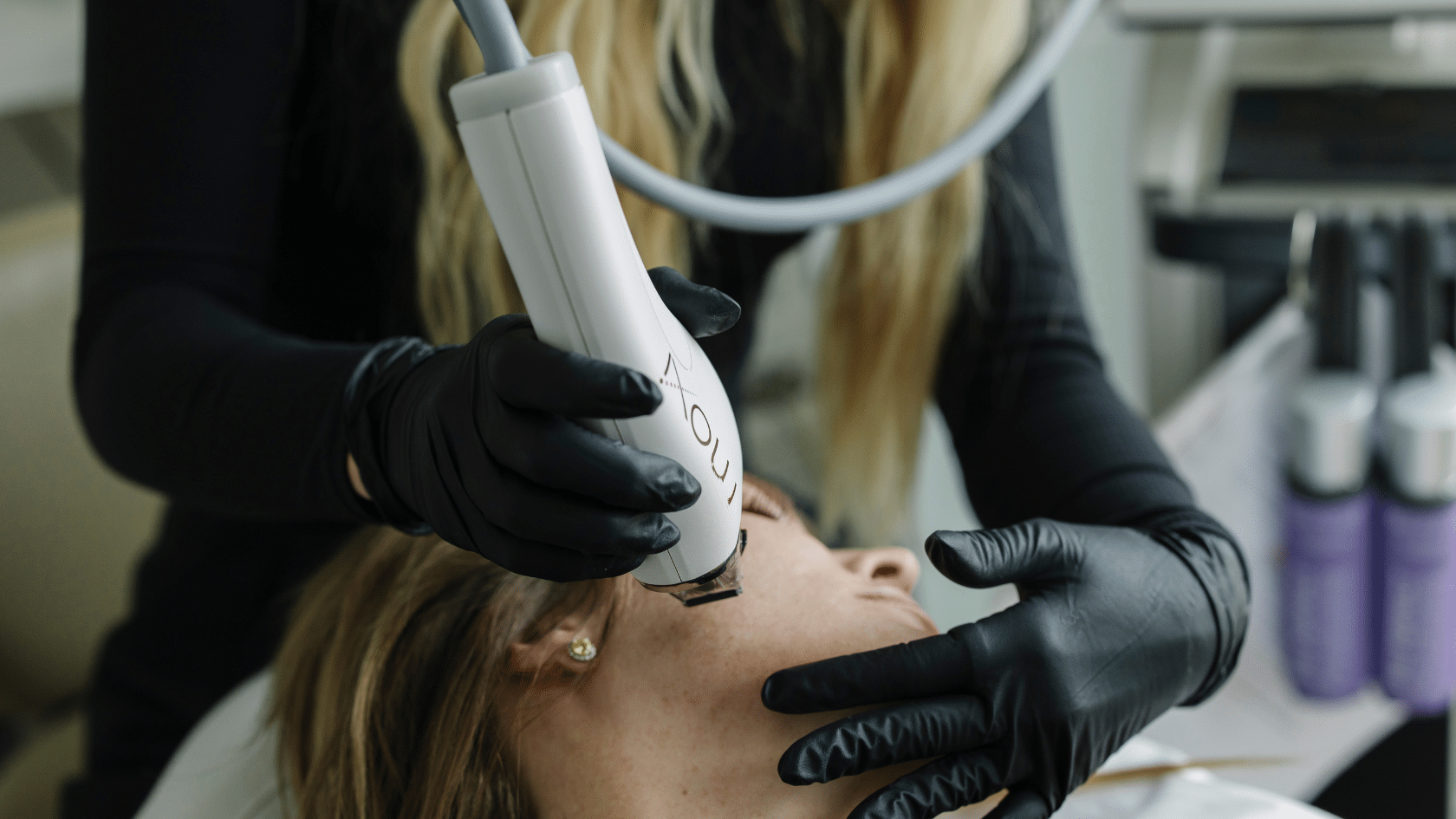
While specialized products like these yield excellent results, we shouldn’t overlook the vital role of creams and tinted foundations in mitigating scar visibility.
Selecting a full coverage foundation tailored specifically for scar concealment can greatly enhance the overall effect. Look for formulations that boast high pigmentation yet feel lightweight upon application. Many users report up to 70-80% reduction in scar visibility when these foundations are applied correctly.
Remember too that using a color corrector—green for red scars or peach for darker ones—can work wonders as a base layer before applying foundation, creating an even canvas for flawless coverage. Adequate setting with a loose powder, such as those offered by brands like Dermablend, ensures durability throughout your day, resisting smudging or fading.
Additionally, discussing makeup tools emphasizes another key aspect of scar concealment: application technique. Using brushes designed for precise application or makeup sponges can help build product seamlessly into the skin without emphasizing imperfections. A kabuki brush is highly recommended for working with body makeup products or larger areas where additional coverage is needed.
Understanding how products interact with your skin and experimenting with different techniques will empower you in your journey toward effective concealment of facial imperfections, setting the stage for further exploration into products designed to lessen visible scars over time.
Effective Scar Reduction Creams
When you’re considering treatment options for facial scars, it’s essential to remember that not all creams are created equal. Scar reduction creams harness powerful ingredients designed to improve skin texture and reduce discoloration, ultimately helping to make your scars less noticeable.
But which ingredients are the most effective? For instance, onion extract is one standout component commonly found in products like Mederma, known for its benefits in improving the overall appearance of scars. Additionally, niacinamide has gained recognition for its capability to lighten hyperpigmentation and improve skin elasticity.
At Utah Facial Plastics, we recommend a custom product regimen to accelerate healing. For most patients, noticeable improvement in scar color and texture begins around week six, with optimal results at the 3–6 month mark when combined with in-office treatments. While over-the-counter options like Mederma or Bio-Oil are excellent for early scars, deeper or hypertrophic scars often require prescription-strength retinoids or compounded topicals formulated specifically for your skin type.
Ingredients Matter
Understanding what goes into your scar cream is vital for selecting the right product that caters to your specific needs. Beyond onion extract and niacinamide, here are some other noteworthy ingredients you might come across when browsing through various scar treatments:
- Silicone: Often recommended for its effectiveness post-wound closure; silicone gels form a protective barrier, retaining moisture while enhancing healing.
- Retinoids: Prescription-strength retinoids increase collagen production and reveal fresher skin layers; however, they may not work as effectively on hypertrophic or keloid scars.
- Vitamin C: Renowned for its antioxidant properties, vitamin C aids in reducing redness but does not address scar thickness directly.
- Hydroquinone: A great alternative for fading dark spots from hyperpigmentation, although it typically requires a prescription due to its potency.
Popular options have emerged as favorites among users and dermatologists alike. Mederma Advanced Scar Gel remains a top-rated choice due to its Cepalin extract aimed specifically at flattening raised scars. Bio-Oil Skincare Oil is another go-to with nourishing plant extracts that improve uneven skin tone while reducing redness. Kelo-Cote Advanced Formula Scar Gel stands out for those who experience surgical scars, offering a smooth, non-sticky finish that dermatologists often recommend.
While these creams work diligently on healing scars from within, makeup products can serve as an immediate solution to conceal blemishes and enhance your confidence in your skin’s appearance.
Best Makeup Products for Scar Coverage
When it comes to hiding facial scars, the right products can serve as powerful allies in boosting confidence. One standout option is Dermablend Cover Creme, prized for its exceptional coverage and long-lasting wear. Many individuals facing severe discoloration or raised scars often find comfort in its full-coverage formula, which successfully masks imperfections without feeling heavy on the skin. Imagine getting ready for an important event and knowing this product will stay put while providing a flawless finish—it’s truly transformational.
MAC Studio Fix Powder Plus Foundation
Another excellent choice is MAC Studio Fix Powder Plus Foundation. This product offers great coverage while maintaining a natural appearance, blending seamlessly into your skin tone. Users appreciate how it skillfully conceals lighter scars, helping them feel confident without being overly conscious of what may be peeking through their makeup. An unexpected bonus that many rave about is its ability to hold up against sweat and humidity, ensuring you look fresh even when temperatures rise.
Such experiences underscore the importance of choosing makeup that not only covers well but also feels comfortable throughout the day. However, having the right foundation isn’t enough; understanding application techniques is equally vital to achieving that flawless finish.
The Importance of Application Techniques
First, always begin with a quality primer, such as the Brilliant Base™ Illuminating Primer, to create a smooth base. This helps products adhere better to your skin and enhances their staying power. Once applied, consider layering heavier products first—like creams or cover creams—before transitioning to lighter formulations for better compatibility.
Setting your makeup with either loose powder or spray ensures everything stays intact throughout your busy day. It’s this combination—carefully chosen products paired with effective application techniques—that leads to an impeccable, scar-free facade.
As you incorporate these top makeup products into your routine, you can navigate visible scars gracefully while enhancing your overall appearance. With experimentation and personalization, you’re on the right path toward addressing your unique skincare and cosmetic needs before we move into more detailed approaches to makeup application.
Step-by-Step Makeup Application Guide
The journey to effectively cover facial scars begins with creating the ideal canvas for makeup. Start by cleansing your face thoroughly to remove any dirt and impurities that may interfere with product adherence. Following this, applying a lightweight moisturizer is essential; choose one that is suitable for your skin type and is non-comedogenic—meaning it won’t clog your pores.
This step hydrates your skin, ensuring that makeup goes on smoothly and adheres better while providing a barrier between your skin and makeup.
With the skin prepped and ready, you can now focus on creating a flawless base through primer application.
Step 2 – Apply Primer
Next up is the application of primer. A silicone-based primer serves as an excellent choice because it creates a silky-smooth surface that fills in imperfections and minimizes texture, making scars less visible. A personal favorite is the Benefit POREfessional Primer, known for its ability to blur out fine lines and create an even palette for further layers.
Apply the primer with your fingers or a makeup brush strategically on areas that require extra coverage; this simple act can make a world of difference in how your makeup looks.
Once your primer has set, it’s time to dive into concealing those blemishes.
Step 3 – Apply Concealer
In this crucial step, concealers come into play. If you notice that your scar exhibits discoloration—like redness or deep pigmentation—use a color-correcting concealer to neutralize those tones before layering foundation. For red scars, dab a green color corrector gently onto the area to counteract the redness; conversely, if the scar appears dark, opt for an orange corrector.
This technique helps lay down a solid foundation for further coverage and allows your main foundation layer to perform better.
After correcting any discoloration, it’s time to build that beautiful base with foundation.
Step 4 – Build Foundation
When choosing a foundation, full coverage is key. A highly regarded option in the makeup community, the Dermablend Flawless Creator, offers substantial coverage without feeling heavy or cakey on the skin. To apply, use a damp beauty sponge: it not only blends seamlessly but also allows for buildable coverage where needed.
Pay extra attention around the areas with scars, pressing the sponge gently over them to ensure maximum coverage while avoiding an overly thick application.
With foundation applied, blending becomes imperative for a seamless finish.
Step 5 – Blend and Set
Finally, take the necessary time to blend thoroughly with that same sponge or brush to ensure there are no harsh lines between different layers of products. After blending has reached perfection, set everything in place using a lightweight translucent setting powder.
This step not only secures your hard work throughout the day but also prevents any smudging or fading—a critical factor when covering scars that need extra durability from wear and tear.
Understanding these techniques lays a solid foundation, yet some may seek more impactful solutions beyond makeup alone.
Professional Medical Interventions
When it comes to addressing facial scars, professional medical interventions have become increasingly popular due to their effectiveness and precision. Among the foremost treatments are laser treatments and microneedling, both of which deliver tangible results that can transform your skin’s texture and appearance.
Laser Treatments
Let’s look at laser treatments first. Fractional CO2 lasers are a well-known example, employing targeted light energy to resurface the skin. This method reduces scar tissue by vaporizing damaged skin cells while stimulating collagen production in the underlying layers. This means that you’re not only treating existing scars but also preventing further scarring from occurring.
Think of laser treatments as a way to reset your skin. By removing the old, damaged layer and encouraging new, healthy skin to emerge, you create a smoother surface that’s less prone to imperfections.
At Utah Facial Plastics, we utilize the advanced Halo Hybrid Fractional Laser System to target scar tissue with remarkable precision. For microneedling, our Sylfirm X laser is a dual wave RF collagen induction treatment system that allows for deeper collagen stimulation with less downtime. One patient case involving post-surgical cheek scarring showed a 60% texture improvement after three RF microneedling sessions and two fractional laser treatments over a 4-month period. Typical downtime in our practice is 3–5 days for laser and 24–48 hours for microneedling.
During your consultation with a dermatologist, they will assess your specific scars, discuss the number of sessions required—which often ranges from three to six—and any potential downtime you might need after each session. The benefit of these procedures is their minimal side effects compared to more invasive surgical options. Additionally, advancements in technology have led to more sophisticated techniques that allow for precision targeting of scarred tissues.
Here are some stunning results from Utah Facial Plastics laser resurfacing patients:
Microneedling
Next up is microneedling, also known as collagen induction therapy. This technique uses fine needles to create micro-injuries in the skin, stimulating your body’s natural healing process. By promoting collagen and elastin production, microneedling effectively fills out indented scars over time, leading to improved texture and reduced visibility.
Many patients report visible results after multiple sessions—often noticing smoother skin texture and reduced scar depth following just a few treatments. In 2025, innovations such as RF microneedling equipment provide even greater precision while enhancing patient comfort through numbing creams and vibration therapy during treatment sessions.
Ideal candidates for microneedling include those with atrophic scars or uneven skin texture resulting from previous acne breakouts. However, individuals with active acne or certain skin infections should avoid this intervention until the underlying issues have been addressed.
Both laser treatments and microneedling offer promising avenues for diminishing facial scars while improving overall skin quality. They fit seamlessly into a modern approach towards aesthetic care that emphasizes prevention along with treatment, making them effective choices in 2025’s beauty landscape.
With these medical options providing advanced care for facial scars, exploring some convenient solutions that come from nature can also be beneficial for those seeking alternative routes.
Home Remedies and Natural Alternatives
For those who prefer a gentler, more natural approach to diminishing the visibility of facial scars, several remedies can be effective. Among these, the honey and lemon mask stands out as a powerful duo.
Honey is not only a popular kitchen ingredient; it boasts remarkable healing properties that can soothe the skin while providing moisture. When combined with lemon juice, which acts as a natural bleaching agent, this mixture can lighten and soften scar tissue over time. Many people report positive results from using it regularly.
Simply mix equal parts honey and fresh lemon juice, apply the concoction to the affected areas for about 10 to 15 minutes, and rinse off. Consistency is key—with regular use, you may start to notice improvements in the texture and appearance of your scars.
While natural remedies can complement professional treatments, our providers caution against using acidic ingredients like lemon directly on healing or freshly treated skin, as this can cause irritation or hyperpigmentation. At Utah Facial Plastics, we guide patients on how to safely incorporate nourishing products and masks into their recovery plan without compromising professional results.
Transitioning smoothly from topical treatments to another fantastic option, we have coconut oil.
Coconut Oil Massage
Massaging scars with coconut oil is not just soothing; this simple practice may also create positive changes beneath the skin’s surface. Coconut oil has been recognized for its moisturizing benefits and ability to improve blood circulation when applied topically. Studies have shown that coconut oil can aid in healing wound scars due to its rich composition of fatty acids and antioxidants.
To use coconut oil effectively, warm a small amount in your hands until it melts slightly, then gently massage it into the scarred area. The combination of massage and hydration can promote faster healing while keeping the skin supple.
As you incorporate these natural remedies into your scar treatment routine, it’s essential to remember that they work best as part of a comprehensive skincare plan.
A Comprehensive Skincare Routine
Cultivating a solid skincare regimen that addresses multiple aspects of skin health will maximize the efficacy of any home remedy. Consistently cleansing your face with mild soaps helps remove impurities while allowing your treatment products to penetrate effectively.
Following up with a gentle moisturizer keeps skin hydrated, which is crucial for reducing scar appearance. Furthermore, using sunscreen daily—preferably an SPF of 30 or higher—not only protects against harmful UV rays but also prevents existing scars from becoming darker as they heal.
The journey towards minimizing scarring may involve trial and error to find what suits your skin best—and that’s perfectly okay! Marking your progress can also keep spirits high during this time-consuming yet rewarding endeavor.
With a strong foundation laid in skincare practices, let’s explore actions that specifically target healing and improving the look of scars more directly.
Comprehensive Skin Care Routine for Scars
Consistency is the cornerstone of any effective skincare regimen, especially when dealing with facial scars. Implementing a systematic approach not only helps in fading scars but also maintains overall skin health. To start, gentle cleansing is crucial. Using a mild, sulfate-free cleanser like Cetaphil Gentle Skin Cleanser ensures that your skin is cleansed without irritation. This step prepares your skin for subsequent treatments by removing impurities while being gentle on sensitive areas.
Once your skin is clean, it’s important to focus on exfoliation. This step brings subtle yet significant benefits.
Step 2 – Exfoliation
Regular exfoliation plays a pivotal role in scar management as it helps to remove dead skin cells, making way for new cell growth. This process can enhance the appearance of scars by helping them blend more seamlessly with your surrounding skin. However, you must choose products wisely; AHA or BHA acids, such as those found in Paula’s Choice BHA Liquid Exfoliant, are often recommended for their effectiveness without being overly harsh on the skin. These acids gently slough away the top layer of dead cells without causing irritation, promoting smoother and clearer skin over time.
After you have exfoliated, the next step involves targeting specific scars more directly.
Step 3 – Targeted Treatments
Incorporating specialized serums or treatments geared toward scar healing can significantly expedite improvement. Look for products containing retinoids—these are known to speed up cell turnover and support the regeneration of new, healthier skin. The Ordinary’s Retinol 1% is an excellent option that provides a concentrated dose of retinoids to aid in this process while minimizing signs of aging. Applying these targeted treatments consistently will improve scar visibility and help prevent new ones from forming.
It’s not just about treating the scars; maintaining proper hydration and sun protection plays a vital role in protecting your skin’s integrity.
Step 4 – Hydration and Protection
Keeping the skin well-hydrated creates an environment conducive to healing. Products like CeraVe Moisturizing Cream work wonders in locking in moisture and ensuring the skin remains supple throughout this journey. Additionally, applying sunscreen daily cannot be overstated. UV exposure has been scientifically shown to darken scars and impede their healing process. By incorporating a broad-spectrum sunscreen like Neutrogena Ultra Sheer SPF 50, you’re taking an essential step in preserving your current complexion and preventing future discoloration linked to fading scars.
| Routine Step | Recommended Product |
|---|---|
| Cleansing | Cetaphil Gentle Skin Cleanser |
| Exfoliation | Paula’s Choice BHA Liquid Exfoliant |
| Targeted Treatment | The Ordinary Retinol 1% |
| Hydration | CeraVe Moisturizing Cream |
| Sun Protection | Neutrogena Ultra Sheer SPF 50 |
Utah Facial Plastics offers a specialized Scar Recovery Booster program, combining at-home products with in-office therapies such as Red Light Therapy, HydraFacials, and Hyperbaric Oxygen Therapy to speed healing and minimize scar visibility. This integrative approach helps patients heal faster while maintaining healthy, hydrated skin. Learn more about our Recovery Boosters here.
By integrating these steps and using the right products diligently, you’ll be well on your way toward achieving visible improvements in the appearance of facial scars and enjoying healthier skin overall.
Investing time into a consistent skincare routine not only aids in scar management but also enhances your overall confidence and comfort with your skin.
Additional Resources
-
- How Many Chemical Peels do I Need for Hyperpigmentation?
- Chemical Peels for Acne Scars: How Many Treatments Do You Need?
- Forever Clear: Acne Treatment
- The Benefits of Laser Skin Resurfacing for Acne Scars
- Facial Scarring Treatment: Restore Confidence
- Top 5 Questions To Ask If You Want A Chemical Peel
- Scar Revision Surgery: Understanding the Procedure
- What Do Facelift Scars Look Like?
Let us help you reach your aesthetic goals today! Visit us at our Draper, Layton or Heber City locations in Salt Lake City, Utah!
